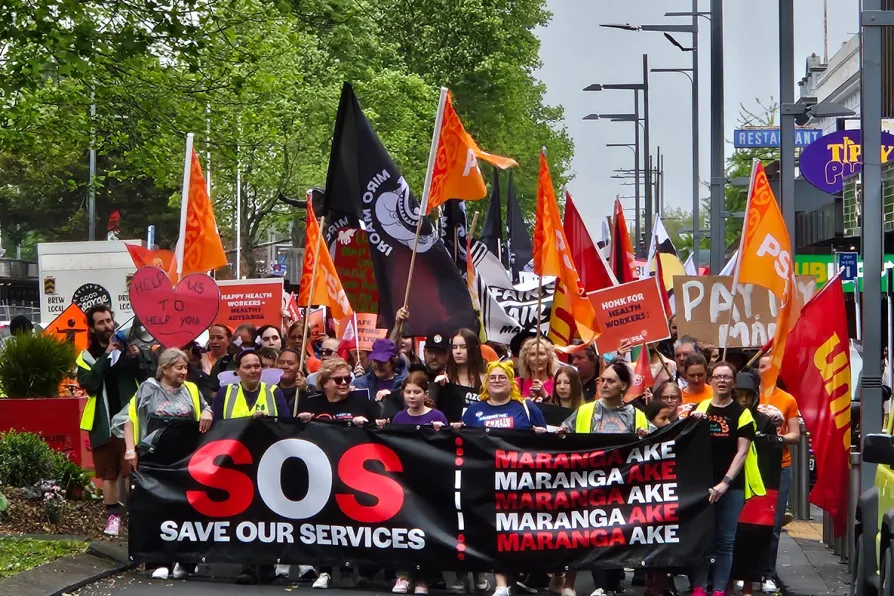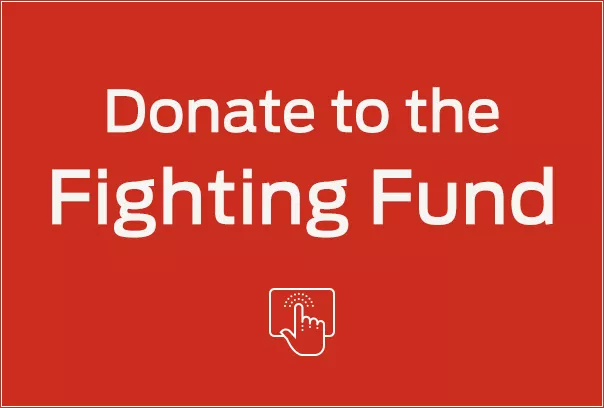Once the bustling heart of Christian pilgrimage, Bethlehem now faces shuttered hotels, empty streets and a shrinking Christian community, while Israel’s assault on Gaza and the tightening grip of occupation destroy hopes of peace at the birthplace of Christ, writes Father GEOFF BOTTOMS
HENRY FOWLER puts the strike of public-sector workers in New Zealand in the wider context of deteriorating employment conditions throughout the world’s major economies


THE year 1979 is forever etched into our collective memories. The dawn of Thatcherism, the birth of neoliberalism, and the start of the systemic decline of trade union membership in Britain.
However, away from Britain, 1979 was significant for another more positive reason. In New Zealand, 1979 marked the date of their last general strike. A strike which saw an estimated 300,000 workers take part.
Why all this focus on 1979? Well, just a few days ago we saw the largest co-ordinated strike since that general strike in New Zealand. As healthcare workers, teachers and other workers joined together in what popularly referred to as a “megastrike.”
Despite extreme weather affecting strike activities in several regions, over 100,000 workers took part in the action on Thursday. This included large marches and demonstrations in cities like Aukland. These marches and demonstrations prioritised workers’ voices including nurse Becks Kelsey, who, speaking at Aukland’s rally, said: “Patients should not have to be harmed, or die, before things improve.”
These international developments in class struggle are important. To the shame of the British movement, very little focus, analysis and understanding is given to strikes abroad. Especially, when you look at the recent farm workers’ strikes in India, the largest in human history.
International solidarity is vital. As we have seen throughout history, workers in one country taking action to support workers in others, most recently over Palestine and previously in support of the miners’ strike and refusing to handle goods from apartheid South Africa and Pinochet’s Chile.
We have a proud history of collaboration between workers through action, and this is matched with relationships through international sectoral and industrial federations, providing spaces for workers to build international collective resistance to the international crises of global capitalism.
At Strike Map and our partners General Federation of Trade Unions (GFTU), we were keen to share solidarity greetings with our sister federation New Zealand Council of Trade Unions Te Kauae Kaimahi (NZCTU). It was great to see GFTU general secretary, Gawain Little’s letter accompanied with our social media posts supporting the strike. Building international links and solidarity is fundamental to building workers’ power.
Similarly to our own strike wave of 2022-23, these strikes and the role of unions in fighting back, are hugely popular with 65 per cent of the public on the side of the strikers in polling release ahead of strike day.
With stagnating economies, low growth and low pay dogging many countries around the world, the popularity and the relevance unions have in fighting back to claim what workers are owed and rekindle the idea of hope of a better future.
We will be working further with NZCTU to develop links and better support workers across the country.
While Strike Map’s focus has been building workers’ power and solidarity for strike action in Britain and Ireland, this latest uptick in visible class struggle reminds us all of the importance of the international movement.
Last year, Strike Map worked with activists in the Netherlands to help support mapping strikes there. A potential global expansion of Strike Map is an exciting prospect, with so many maps already existing across the globe from the US to Turkey and beyond.
It is through our participation with the International Association of Strikes and Social Conflicts, that Strike Map works with both academics and activists in understanding the internationally collective approaches, lessons and strategies of workers. We have also taken part in large international meetings of trade unionists, supporting the Tom Mann international tour with comrades from Australia.
The impressive strikes this week in New Zealand remind us of how even in countries known to have low levels of strike action, that with the right material conditions and co-ordinated organisation, we can see “explosions” of class anger on a large scale.
As we look on to the next steps of this national strike on the other side of the world, closer to home many trade unions from the Public and Commercial Services Union (PCS), to Unite and the British Medical Association (BMA) are all involved in a lot of strike action and or in the process of balloting for action.
The incredible Gloucester phlebotomists are still out, after over 200 days of action, the largest strike in NHS history. Alongside them, we have Brum bin strikers who have been on all out strike since March, the Sheffield bin strikers who are now well over a year of action, and the My CSP strikers who have taken 15 weeks of action.
Whether it is a “megastrike” on one side of the world, or the growing discontent of workers on our small island, struggle is here to stay.
We must take energy and enthusiasm from big strikes around the globe and champion them, as part of an international working class. This type of solidarity matters and strengthens our work domestically.
We look forward to next year’s 100th anniversary of our last general strike, a timely reminder of the sheer power of co-ordinated strike action and solidarity across our movement.
Henry Fowler is co-founder of Strike Map.










